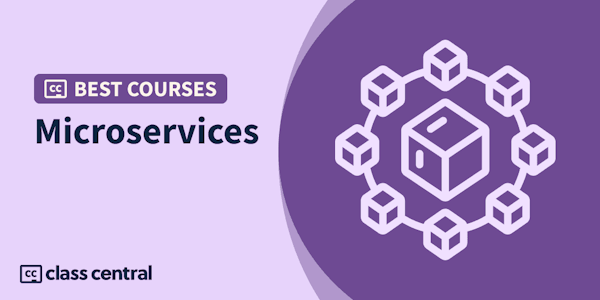What you'll learn:
- You will be learning the entire process to set up Kubernetes in a manner so that one could automate the deployment using this.
- We have included some of the projects or sample questions in this course which are used to fortify one’s root on this technology.
- After completing this course, you will be able to work very thoroughly with Kubernetes.
- The objective of this course is to train the developers and the application admins on deployment management.
- The fundamental concepts and architecture of Kubernetes.
- How to set up and manage Kubernetes clusters on various platforms, including AWS and local environments.
- Best practices for deploying and scaling applications using Kubernetes.
- Advanced Kubernetes features such as autoscaling, networking, and persistent storage.
- Practical skills through hands-on projects, including deploying web applications and custom Docker images.
Introduction to the Course
In the ever-evolving landscape of cloud computing and containerization, Kubernetes has emerged as the leading orchestration platform for managing containerized applications. Our comprehensive course, "Mastering Kubernetes: From Basics to Advanced Applications," is designed to take you on a journey from understanding the fundamental concepts of Kubernetes to mastering its advanced features and real-world applications.
Section 1: Kubernetes Training
Overview: This section provides a foundational understanding of Kubernetes, focusing on its architecture, major components, and basic operations. It is designed to equip you with the essential skills needed to deploy, manage, and troubleshoot Kubernetes clusters.
Key Topics:
Introduction to Course: An overview of the course objectives and structure.
Kubernetes Training: A deep dive into Kubernetes and its importance in modern cloud infrastructure.
Kubernetes Components: An exploration of the core components that make up Kubernetes.
Kubernetes Architecture: Understanding the architecture that powers Kubernetes.
Kubernetes Major Concepts: Key concepts that are crucial for working with Kubernetes.
Steps and Instance Creation: Step-by-step guide to creating instances.
Cluster on AWS: Detailed instructions on setting up a Kubernetes cluster on AWS.
Kubernetes Cluster Creation and Deletion: Processes for creating and deleting Kubernetes clusters.
EC2 Management Node Creation: Managing EC2 nodes within the cluster.
Configuring K8s Cluster on AWS: Configuration steps for setting up a Kubernetes cluster on AWS.
K8s Cluster Creation and Deletion: Additional details on creating and deleting clusters.
Installation Pre-Requisite and Documentation: Pre-requisites for installing Kubernetes and relevant documentation.
Setting up Ubuntu Instances for Kubeadm: Preparing Ubuntu instances for Kubernetes setup.
Cluster Setup on Master: Setting up the master node for the cluster.
Worker Node Joining to Cluster: Joining worker nodes to the master cluster.
Issues Troubleshooting and Node Deletion: Common issues and troubleshooting steps, along with node deletion.
Hello Minikube: Introduction to Minikube, a tool for running Kubernetes locally.
Minikube Installation: Step-by-step guide for installing Minikube.
Conclusion: Wrap up and summary of the section.
Section 2: Kubernetes Essentials
Overview: This section delves deeper into Kubernetes, covering essential topics such as Kubernetes architecture, container orchestration, and advanced cluster management techniques.
Key Topics:
Introduction to Kubernetes: Overview of Kubernetes and its capabilities.
What is Kubernetes: Detailed explanation of Kubernetes and its role in container orchestration.
Kubernetes Architecture: In-depth look at the architecture of Kubernetes.
Container Orchestration Engine: Understanding container orchestration and its benefits.
Kubernetes Installation: Installation methods for Kubernetes.
Installing Kubernetes using Kubectl: Practical guide to installing Kubernetes using Kubectl.
Google Kubernetes Engine: Introduction to Google Kubernetes Engine (GKE) and its features.
Pod State and Lifecycle: Managing pod states and lifecycles in Kubernetes.
Kubernetes Administration: Administration tasks and best practices.
Packaging and Deploying on Kubernetes: Methods for packaging and deploying applications on Kubernetes.
Kubernetes Networking: Understanding and configuring Kubernetes networking.
Autoscaling Kubernetes Cluster: Techniques for autoscaling Kubernetes clusters.
Setting up Pods and Deployments: Step-by-step guide to setting up pods and deployments.
Cronjobs and Daemon Sets: Managing cron jobs and daemon sets in Kubernetes.
Controllers, Services, and Storage: Understanding controllers, services, and storage options.
Running WordPress on Kubernetes: Practical example of deploying WordPress on Kubernetes.
Section 3: Kubernetes Case Study - Hosting a Web Application as a Container
Overview: This section presents a practical case study on hosting a web application as a container using Kubernetes. It covers the entire process from cluster initialization to deploying and managing the application.
Key Topics:
Introduction to Project: Overview of the project goals and objectives.
Kubernetes Installation and Cluster Initialization: Detailed steps for installing Kubernetes and initializing a cluster.
Joining Worker Nodes and Cluster Testing: Adding worker nodes to the cluster and testing the setup.
Pod Scheduling and Resource Management: Techniques for scheduling pods and managing resources.
Application Deployment and Management: Deploying the application and managing updates and rollbacks.
Persistent Storage and Secrets Management: Handling persistent storage and managing secrets.
Monitoring and Troubleshooting: Setting up monitoring tools like Prometheus and Grafana, and troubleshooting common issues.
Section 4: Kubernetes Case Study - Deploying a Custom Docker Image
Overview: This section focuses on deploying a custom Docker image using Kubernetes. It provides hands-on experience in creating, verifying, and uploading Docker images, and deploying them on a Kubernetes cluster.
Key Topics:
Introduction to Project: Project goals and objectives.
Kubernetes Cluster Architecture and Services: Understanding the architecture and services in Kubernetes.
Software Installation and Custom Docker Image: Installing necessary software and creating custom Docker images.
Verifying and Uploading Image: Verifying the Docker image and uploading it to a registry.
Deploying and Managing Custom Images: Deploying custom Docker images on Kubernetes and managing them effectively.
Conclusion
By the end of this course, you will have a thorough understanding of Kubernetes, from basic concepts to advanced deployment strategies. You will gain practical skills through hands-on projects, enabling you to manage and scale containerized applications efficiently using Kubernetes





